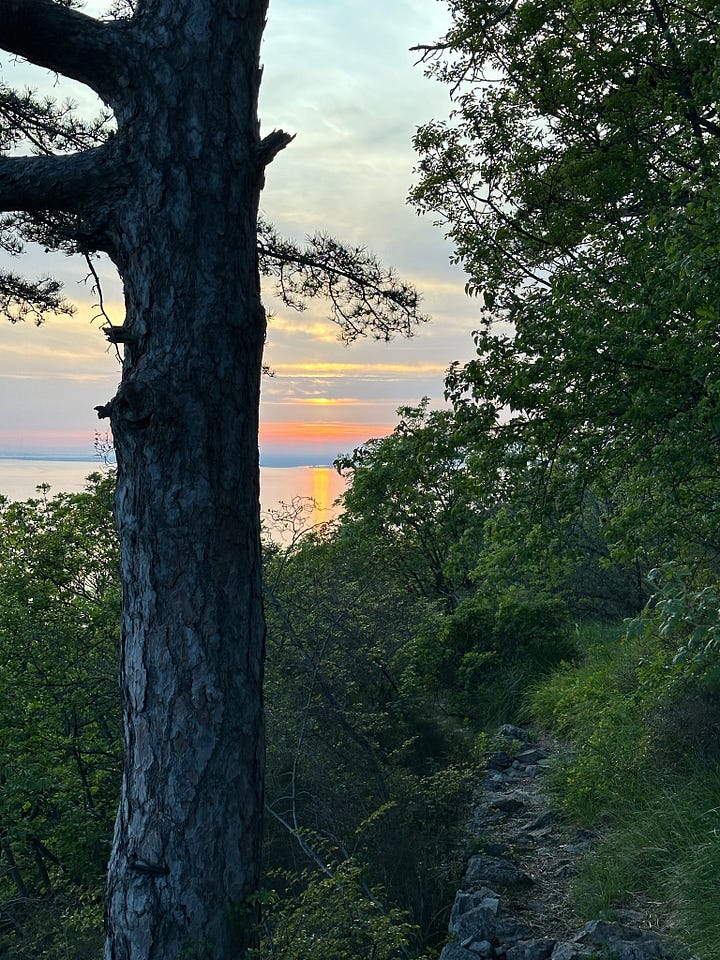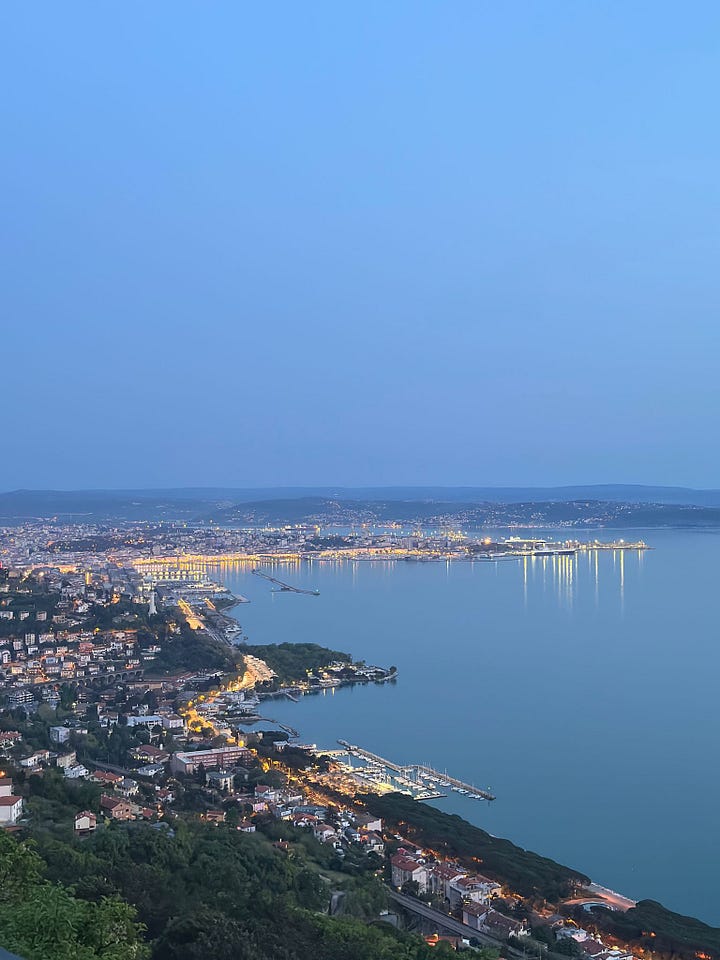Notes beyond the Table 4
Wild asparagus, sage and Strada Napoleonica
On the second day of Easter, I was at the airport in Bucharest at 6 AM. By 6 PM, I was on a hike along Strada Napoleonica (actually on a parallel pathway through the forest), picking wild asparagus and wild sage, and enjoying the most spectacular sunset over the Gulf of Trieste.


First, a bit of context. I was raised with a rather sterilized approach to food and cooking. What I specifically have in mind now is the procurement of ingredients—they were bought from the market or supermarket. Sometimes we had eggs from the countryside, given by relatives or neighbors. However, the interaction with the ingredients always started in the kitchen; I would almost never see them grow in their natural environment.
As we were walking along Strada Napoleonica, my partner noticed a plant called asparagina, so we decided on the spot to leave the main street and venture down a forest path to see if there was any wild asparagus to pick.
Without much effort, we managed to gather a handful of asparagus stems—some very young (and difficult to chew, as we found out the following day), some full and tender. We tasted one or two right there on the spot and enjoyed their sweetness. Along with them, we picked a few sage flowers that now fill our living room with a fresh scent.
After a couple of months together, Olmo and I travelled to Oxford, where he had studied and worked for more than ten years. One day, as we were walking back home, I suddenly saw his arm reach into a neighbor’s garden to pick a few stems, which turned out to be fresh fennel. He smelled them and quickly deemed them worthy of bringing home and cooking with. Such a strange way of procuring food, I thought. For him, it was something habitual—something he used to do as a student here, and also back home in Italy, together with his mother.
A few days later, while in Scotland, he noticed some wild garlic. We started picking it, and just a few hours later, he used it to prepare one of the best risottos I’ve ever had.
This way of interacting with food beyond the kitchen—looking for it in its natural environment, touching it, understanding where it comes from—is new to me, but it enriches my overall experience in a way I hadn’t known, but instinctively felt I wanted and needed. It adds new layers to the whole process and allows me to visualize the complete story of how food gets to my table. Through vision, touch, and smell—and the opportunity to use fresh ingredients—I am slowly rebuilding my relationship with food.
The wild asparagus was cooked into an omelet, served with a side of sushi rice seasoned with black seaweed. A tasty and filling dinner, one that was earned - climbing a wall to get back to Napoleonica truly tested our physical capabilities.


